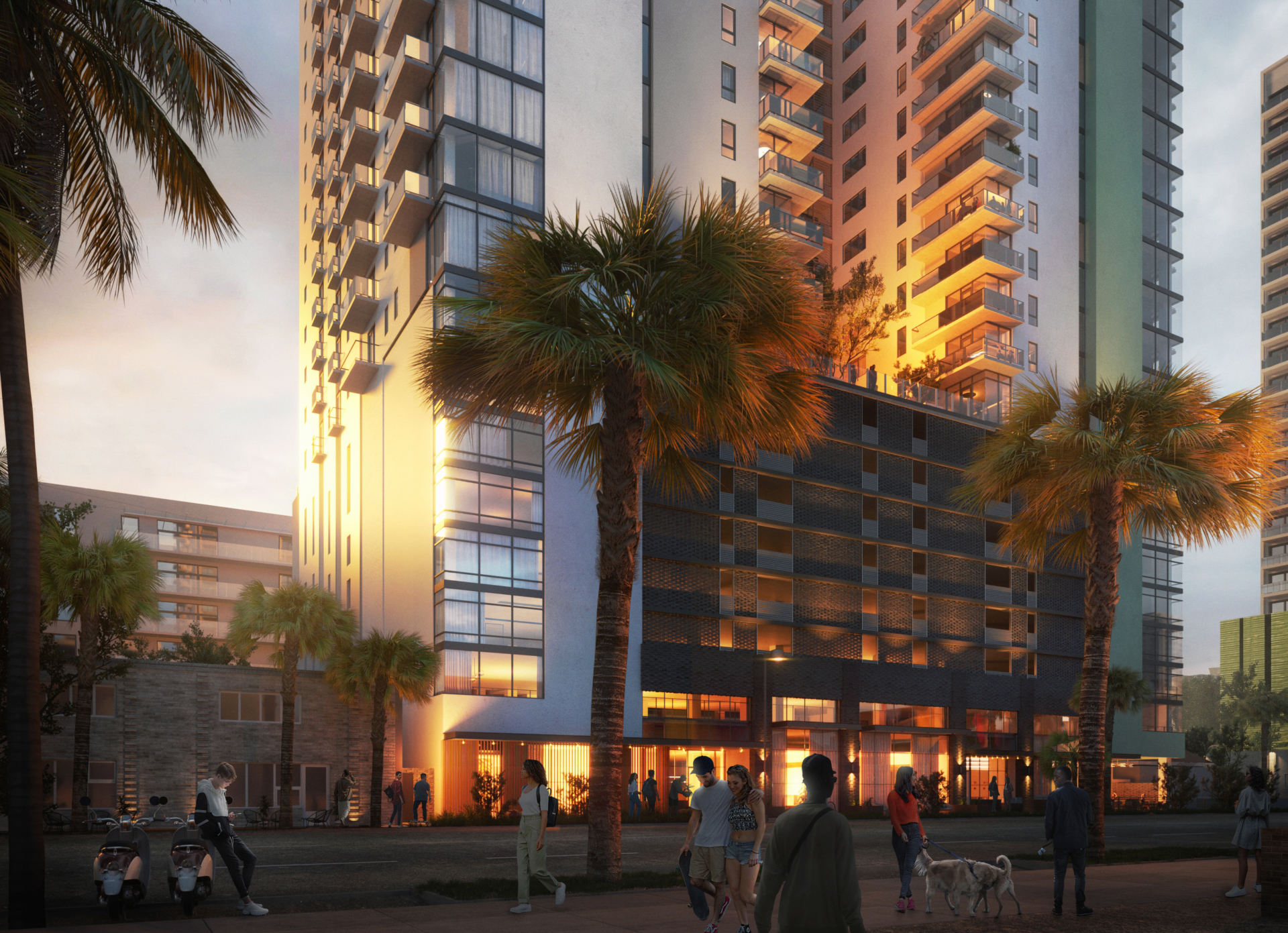The 2021 rental season kicked off twice as strong as usual, with Gen Z and high-earning Millennials being the most active apartment hunters. In particular, New York City and San Francisco saw an astounding interest in apartments during the first half of 2021 and Phoenix rental activity increases 21%.
Renting activity is back to pre-pandemic levels — up 13% in the first half of 2021 compared to the same time last year — and two groups of people are primarily responsible for it. Specifically, our analysis of nationwide rental applications by age groups showed that the main players who propelled this renewed activity were Zoomers, who accounted for the largest increase in applications for apartments — 39% compared to the year prior — most of whom were entering the rental market for the first time. When we consider renters by income, those who earned upwards of $100,000 were the most active this year, with 34% more than last year.
READ ALSO: Phoenix ranks No. 6 among hottest multifamily markets
Here’s a glimpse of the rental activity in Phoenix:
• The overall Phoenix rental activity increased by 21% compared to last year. Here we include renters who moved within Phoenix itself, as well as those coming from outside the city.
• Gen Z, the youngest generation of renters – the oldest of whom turn 24 this year – saw a 56% surge in rental applications compared to last year. Young Phoenix renters outpaced even the national trend, where Gen Z applications rose 39%.
• Looking at renters by income, those earning $50-75K saw the greatest spike in Phoenix rental activity compared to how many applied for rent last year – 52%.
• There has been a greater increase of renters who chose to move to Phoenix, as opposed to those who preferred to leave. Applications show Phoenix exchanges renters with other Valley suburbs, as well as Tucson and Flagstaff. However, those who moved in saw a 35% increase, while those who left were only 21% more compared to last year.
Meanwhile, interest in big-city apartments is surging and rental applications rose in all of the nation’s 30 largest cities. New York City saw the most spectacular comeback, leading the trend, with double its rental activity compared to last year, while San Francisco had the second-highest increase in renters moving in.
So, to see the complete picture of what renting looks like in the aftermath of the pandemic, we extracted in-depth market and demographic insights by analyzing 2.5 million nationwide renter applications from RentGrow.
Rental Season Kicks-off with a Bang
Renters are on the move again and, this year, they took the apartment market by storm. In fact, the peak renting season started out twice as strong as usual, with 45% more renters applying for apartments in March than in February. By comparison, during the same time period in 2018 and 2019, applications rose by an average of just 23%.
In contrast, last year’s rental season was atypical, starting in May, post-lockdown, and ending sooner than usual. Then, as vaccination rates went up, the job market started to recover, and household savings increased, a sense of newfound confidence motivated renters to get moving. In surveys we conducted earlier in the year, the opportunity to get a better deal was the top reason for moving, and most renters preferred to remain in the same city. Another significant reason for the heightened activity was an acute need for larger apartments to accommodate those who work from home, according to another recent renter survey.
Overall renting activity has returned to pre-pandemic levels. For instance, there was a 12% reduction in overall activity in 2020, whereas the hype in the first half of 2021 led to a 13% increase in rental applications.
Gen Z Most Active Renting Generation
To understand who is behind this renewed activity, we divided rental applicants by age groups, In doing so, we discovered that the highest spike in activity this year came from Generation Z. Specifically, the number of Gen Z renters who moved in the first part of 2021 was up by 39% compared to the same time last year, while the number of applications from all other age groups increased by 10% or less.
Moreover, the youngest renter generation now makes up 27% of the nation’s apartment hunters and is also the only renter age group that’s growing in share (slide 2). Millennials are the largest segment of active renters (45%), but their share decreased 8% since last year. In fact, all generations of renters lost shares to Gen Z, the oldest of whom are turning 24 this year.
High-Income Renters Hunt for New Apartments
Meanwhile, when we looked into the profile of rental applicants by income, earners in the top two income brackets proved to be the most eager to switch apartments, taking advantage of deals on luxury apartments. 33% more renters who earn between $75,000 and $100,000, as well as 34% more renters who earn over $100,000 moved during the first part of this year compared to a year prior. In this case, the need for larger, better living spaces to accommodate working from home and a more comfortable lifestyle were the primary reasons that renters began searching for a new place. Notably, the highly competitive real estate market may also be a factor for some high-earners who are holding off buying in favor of renting.
Interestingly, Millennials represent about half of the apartment-hunters with annual earnings greater than $100,000. They’re followed by Gen X, who make up about 30% of this income group. Of course, a more generous budget enables renters to move into a larger apartment or a nicer area, a preferable alternative to an intimidating real estate market, at least for the time being.
Apartments Filling Up Again in Nation’s Largest Cities
Although last year’s reports lamented about people “fleeing” the nation’s largest cities, this year’s rental stats put those worries to rest. Renting activity in all of the 30 largest U.S. cities was above that seen during the same period last year and was especially hot in the most popular renter hubs on the coasts. New York apartments led this astounding rebound, as the number of renters moving in the Big Apple doubled in the first half of 2021 compared to 2020. Across the country, the Bay Area was in a similar situation, with 79% more people applying for rentals in San Francisco. Similarly, apartments in Seattle and San Jose also saw a lot of interest from apartment hunters.
Renting activity includes all applications by people who moved within the city (urban churn), as well as people who moved into the city from a different city. Plus, what’s even more encouraging is that in a majority of these hubs, the number of renters on the move increased even above pre-pandemic levels, revealing the strong appeal that big city life has retained.




